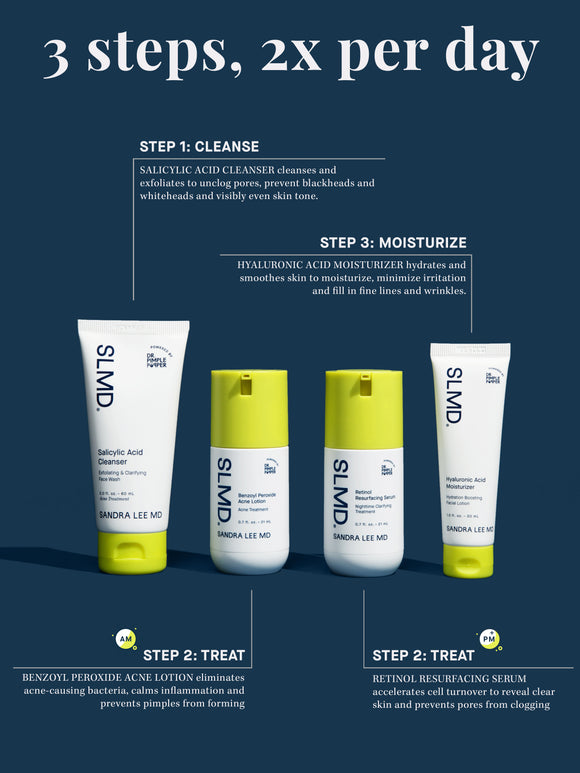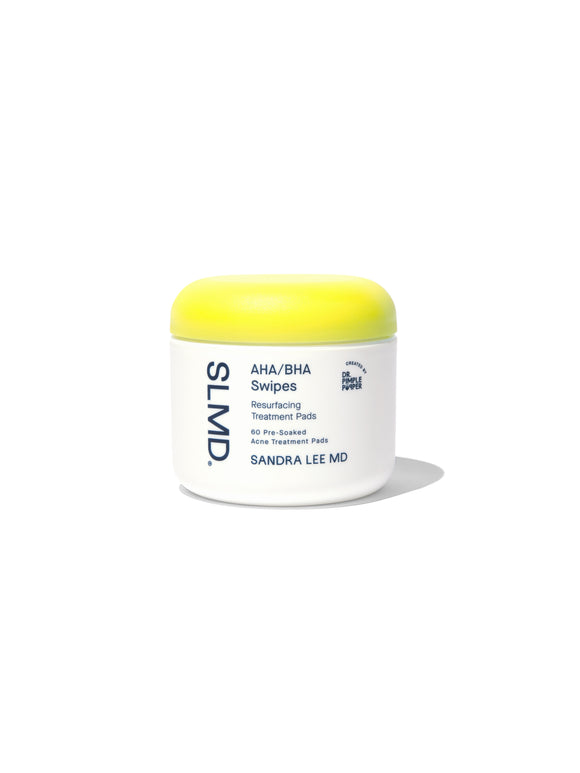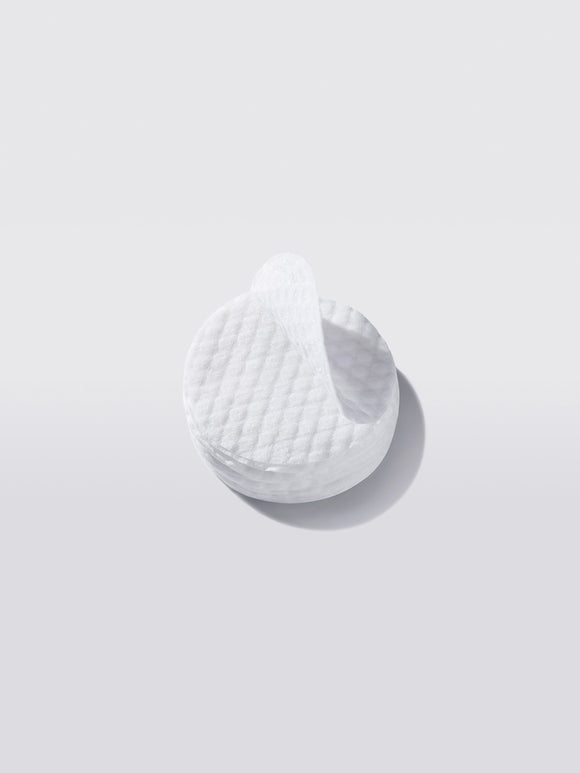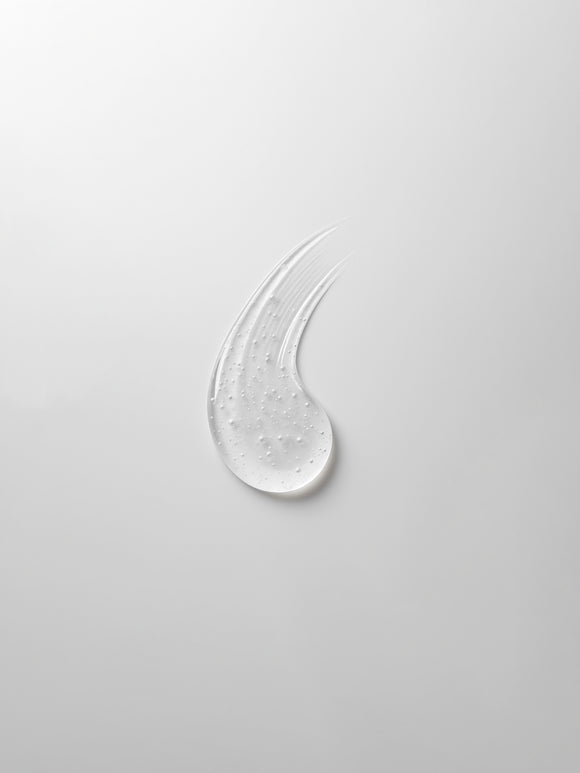
Prescription vs. Medical Grade vs. OTC Skincare: Your Ultimate Guide
Dr. Pimple Popper shares everything you need to know about choosing the right products for the job.
Published:
4 minute read
It’s human nature to assume that stronger is better. However, in skincare, too much of a good thing can lead to problems. Using maximum strength ingredients, mixing too many actives, or applying products too frequently are common mistakes people make when trying to manage skin conditions quickly. With the increasing availability and advertising of prescription and medical-grade skincare solutions, it can be confusing to choose between these and over-the-counter (OTC) products. Here’s some clarification from board-certified dermatologist and SLMD Skincare founder Sandra Lee, MD (aka Dr. Pimple Popper).
Article Quick Links
How the FDA regulates skincare products in the U.S.
First, let’s clear up some common misconceptions about prescription and OTC drugs. The U.S. Food & Drug Administration (FDA) does not approve or closely regulate many personal care products (e.g., shampoo, moisturizer, makeup). Instead, they review individual ingredients and classify them into two main categories:
- Drugs: Substances that treat, prevent, or cure a condition by altering any structure or function of the body. Examples include aspirin, antibiotics, and even eyelash serum if it actually grows hair.
- Cosmetics: Products applied to the outside of the body to change or improve appearance without affecting the body's function. These are regulated more loosely than drugs and do not require a prescription.
Skincare drug ingredients can be both OTC and prescription
It’s important to understand that some skincare ingredients are regulated as drugs by the FDA, though you can find them in both OTC and prescription products, depending on their concentration and intended use. Salicylic acid is a prime example: this is a beta hydroxy acid that’s available in certain strengths on store shelves and generally higher strengths by prescription.
Here’s where product labeling comes into play: not all store-bought products that contain active ingredients (like salicylic acid) are regulated as drugs because they’re not claiming to actually “treat” anything — which is why paying attention to packaging is important. More on that below.
What is over-the-counter (OTC) skincare?
Definition: Products available without a prescription.
Regulation: Must follow FDA guidelines for concentration limits and labeling. OTC products containing active drug ingredients must have a "Drug Facts" label, indicating they meet specific FDA standards for safety and efficacy. This label distinguishes higher-quality OTC products that adhere to stringent guidelines to ensure that they treat a specific skin concern.
Active ingredients: Typically contain lower concentrations of active ingredients compared to prescription products, but they are still effective and backed by clinical data when labeled as a drug.
Use: Suitable for mild to moderate skin concerns.
What is medical grade skincare?
Definition: Products often sold in medical offices or clinics.
Regulation: Less strict than prescription products but often endorsed by medical professionals. They are sometimes referred to as "cosmeceuticals."
Active Ingredients: Generally, concentrations fall somewhere between non-drug OTC products and prescription options. They cannot exceed the maximum concentrations allowed for OTC products as defined by FDA regulations.
Use: Marketed for deeper penetration and more significant results compared to regular OTC products. However, these products do not always undergo the same level of FDA scrutiny as OTC drugs.
What is prescription skincare?
Definition: Products that require a doctor’s prescription.
Regulation: Strictly regulated by the FDA, involving clinical trials and approval processes.
Active ingredients: Higher concentrations and more potent ingredients.
Use: Intended for treating specific medical conditions like severe acne, rosacea, or hyperpigmentation.
Dr. Pimple Popper's Effective OTC Solutions
What’s better: prescription, medical grade, or over-the-counter skincare?
According to Dr. Lee, the best skincare product for you is the one that contains the minimum amount of active ingredients to address your particular concern. Here’s her step-by-step advice for treating mild to moderate skin concerns like acne or keratosis pilaris:
- Start with OTC products: Choose products from trusted brands known for high-quality formulas and follow label instructions precisely. OTC products with a "Drug Facts" label, such as those from SLMD Skincare, meet stringent FDA guidelines for safety and efficacy, making them a reliable choice.
- Increase strength if necessary: If regular-strength OTC products don’t work after the recommended time period, try maximum-strength OTC products.
- Consult a dermatologist: If your condition persists or worsens, see a dermatologist to determine whether a prescription or medical-grade product might be better.
- Be patient: Both OTC and prescription products can take more than a month to show results.
Effective skincare ingredients: OTC and prescription forms
Retinoids
Vitamin A derivatives known for their anti-aging and acne-fighting properties
OTC forms: retinol, retinyl palmitate, adapalene
Prescription forms: tretinoin (Retin-A), isotretinoin (Accutane)
Try: SLMD Retinol Resurfacing Serum
Salicylic acid
A beta hydroxy acid effective for exfoliating the skin and clearing clogged pores
OTC forms: lower concentrations for treating acne; higher concentrations for wart removal
Prescription forms: higher concentrations sometimes prescribed for more stubborn cases of acne and keratosis pilaris
Try: SLMD Salicylic Acid Cleanser, AHA/BHA Swipes, SA Acne Spot Treatment, Salicylic Acid Pimple Patches, Salicylic Acid Body Spray
Benzoyl peroxide
An antimicrobial agent that kills C. acnes bacteria and helps curb inflammation
OTC forms: similar concentrations as prescription for treating acne
Prescription forms: similar concentrations as OTC but sometimes combined with antibiotics for severe acne
Try: SLMD Benzoyl Peroxide Acne Lotion, BP Acne Spot Treatment, BP Body Wash
Sulfur
A natural mineral that treats acne and other skin conditions like seborrheic dermatitis
OTC forms: available in various concentrations for treating acne and other skin conditions
Prescription forms: higher concentrations prescribed for more severe cases
Hydrocortisone
Used for reducing inflammation and irritation
OTC forms: Available in low concentrations
Prescription forms: Higher concentrations used for more severe inflammatory skin conditions

Dr. Lee's Last Word
There’s a common misconception out there that prescription skincare is better than over the counter products. But the truth is, many of the dermatological ingredients I use in my SLMD Skincare line are available in non-prescription strength — and are very effective in managing everything from acne to premature aging.





































